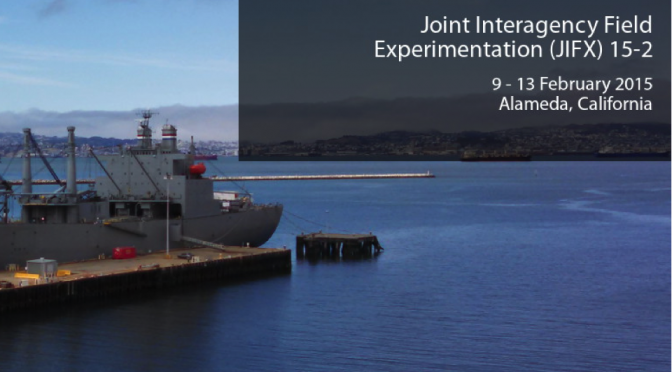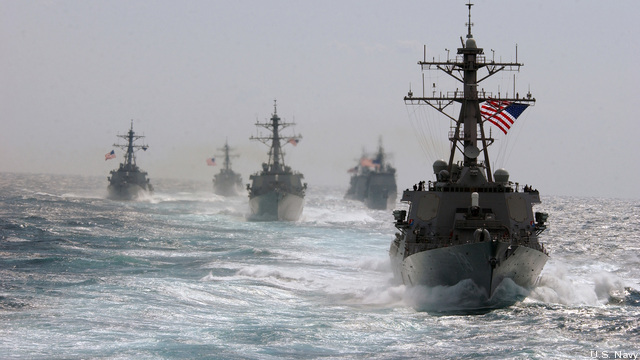The U.S. Navy looks set to lead a bit of joint maritime innovation experimentation in February. According to the U.S. Naval Postgraduate School (NPS)’s Joint Interagency Field Experimentation (JIFX) Program website, the latest interagency field experimentation , set to run 9-13 February, will have a maritime setting and focus. NPS will host “JIFX 15-2” at the Department of Transportation’s Maritime Administration Facility in Alameda, CA, in a port facility and aboard a military cargo ship. Per the primary request for information from NPS, people wanting to conduct experiments on “any and all technologies relevant to the maritime domain” were encouraged to apply. While the initial deadline for such applicants has past, those looking to attend as an observant can still do so here until 04 February.
One of the many specific areas of interest for this JIFX includes (e) Deployable Infrastructure, Power & Water:
- Deployed Infrastructure Building and Maintenance. Support building partnerships and stability operations through building infrastructure capabilities. Ability to reduce time and money spent increasing safety and operational capacity. Areas of interest include solutions that can assist in dust abatement, forward operating base maintenance with roads, runways, tarmacs construction & repair, expeditionary shelter support and efforts addressing fortification and ballistics. Using non-specialized equipment needed for most applications, rapidly deployable and customizable to the region of operations as needed.
- Deployable Lighting Technologies. Light Emitting Diodes (LEDs) are preferred. Potential solutions would be blackout capable and would be easily camouflaged for stealth day/night operations and would need to be ruggedized for all weather use and minimize energy requirements.
- Energy efficiencies. Solutions sought will explore renewable energy sources for mobile and austere environments; reductions in fossil fuel consumption; fused sources including diesel, wind, solar, etc.; energy saving technologies for shelter, transportation, and portable IT systems (to include DC systems, chill water cooling, ambient cooling, cloud computing); alternative shelters and HVAC (heating, ventilation & air conditioning) systems that address a reduction in energy needs, deployable field feeding systems that take into account weight, size, and avoid fuel-fired cooking appliances; deployable self-sustaining waste-to-energy systems capable of handling approximately 1 ton per day, fit into a 1/3 of a 20ft ISO container, and with no hazardous emissions.
- Water Generation and Purification Systems. Solutions other than commercially procured bottled water and current Reverse Osmosis Water Purification Units (ROWPUs) are sought. Potential solutions might include atmospheric water solutions, black & gray water re-use systems, and new reverse osmosis technologies that incorporate reductions in energy demand.
- Safe (non-propagation/non-flammable) Lithium batteries or any related technologies (underwater submersible or like-type platforms).
This post was originally published on the Blue Value Facilities Engineering Blog and was re-published by permission.





